Soyuz TMA-19M carried the British astronaut back to Earth after his mission to the International Space Station. The announcement that the capsule would be coming to Bradford was made back in March. Our team were keen to find the right place to display Soyuz, making sure that visitors would be able to view it from lots of different angles.
After testing out various locations, we decided that the main foyer was the best place for Soyuz (before this, the foyer hadn’t been used to display an object for many years). We’re lucky to have an open staircase which goes up to the sixth floor of the building, with balcony areas as well—so not only can you see the capsule on the ground floor, you can look at it from above too, and see through its small round window. Using our foyer area also means that people can see this amazing spacecraft as soon as they enter the museum.
The museum has a huge glass front, so to make sure we protect the parachute from UV and light damage we installed a filter to the windows and commissioned bespoke theatre-style drapes—creating a dramatic change to the look of the museum.
Having been on display at the Science Museum for the past few months, the capsule first had to make the journey from London to Bradford. It was wrapped with fabric and plastic, and placed on a pallet for transport. It weighs 1650kg and needs to be carefully lifted with a gantry and forklift. The parachute (which weighs 80kg and measures 25m in diameter) was packed into a crate. The transport vehicle arrived at the museum early in the evening of Monday 25 September—we even had to have new front doors made so Soyuz could fit into the museum.
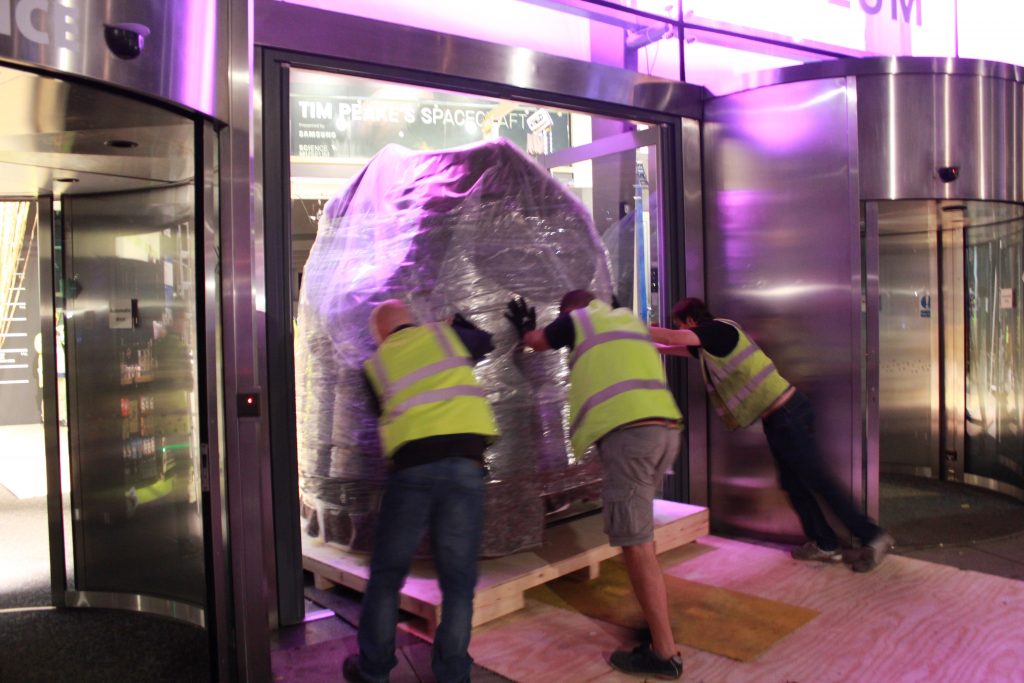
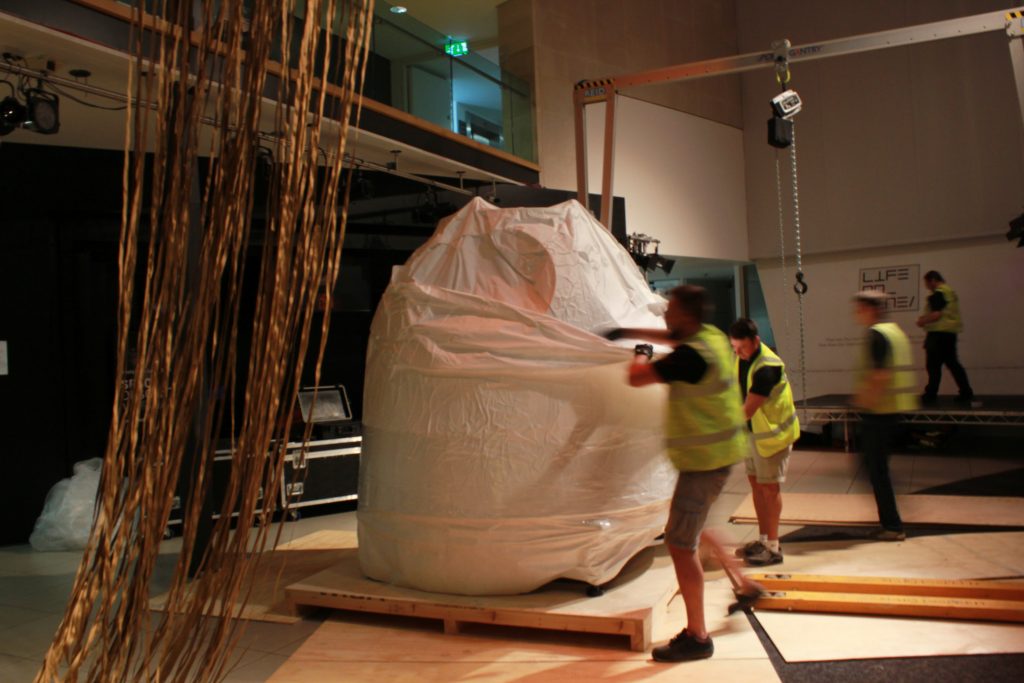
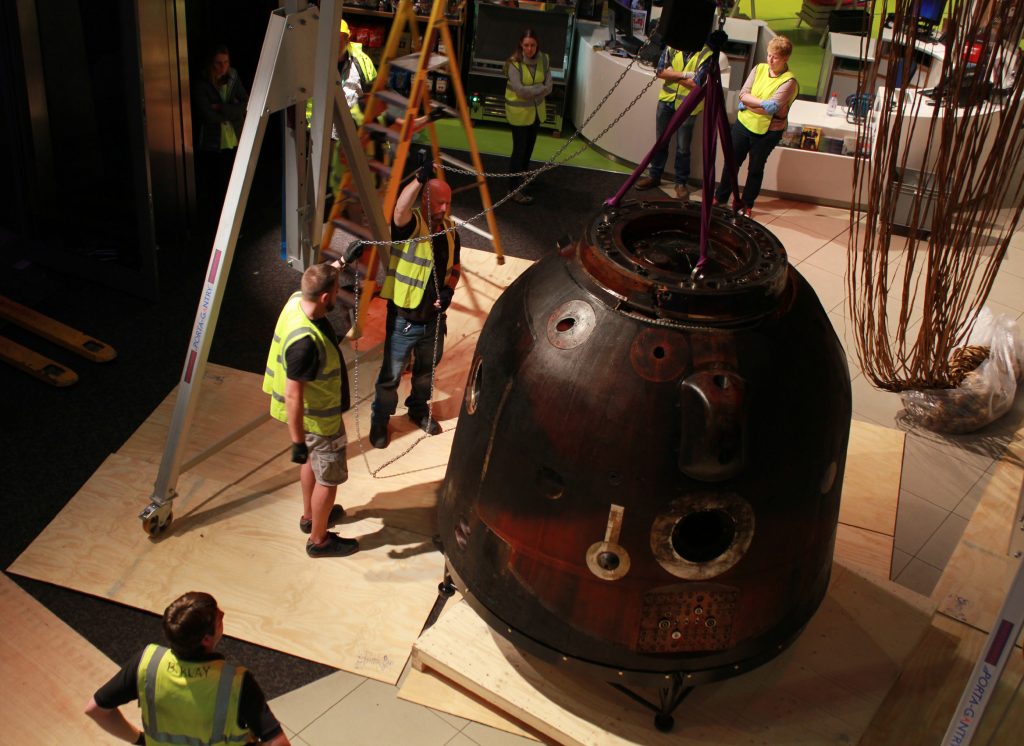
There was also the spacecraft’s vast parachute to think about. Luckily, our foyer is 13 metres high, allowing us to display the parachute suspended from the ceiling. To do this we worked with experts in rigging, using a spider lift which can reach over 20 metres. The parachute is secured using two anchor points in the steel framework of the building, hung over a section of scaffold, and then connected to the capsule by tethering ropes.
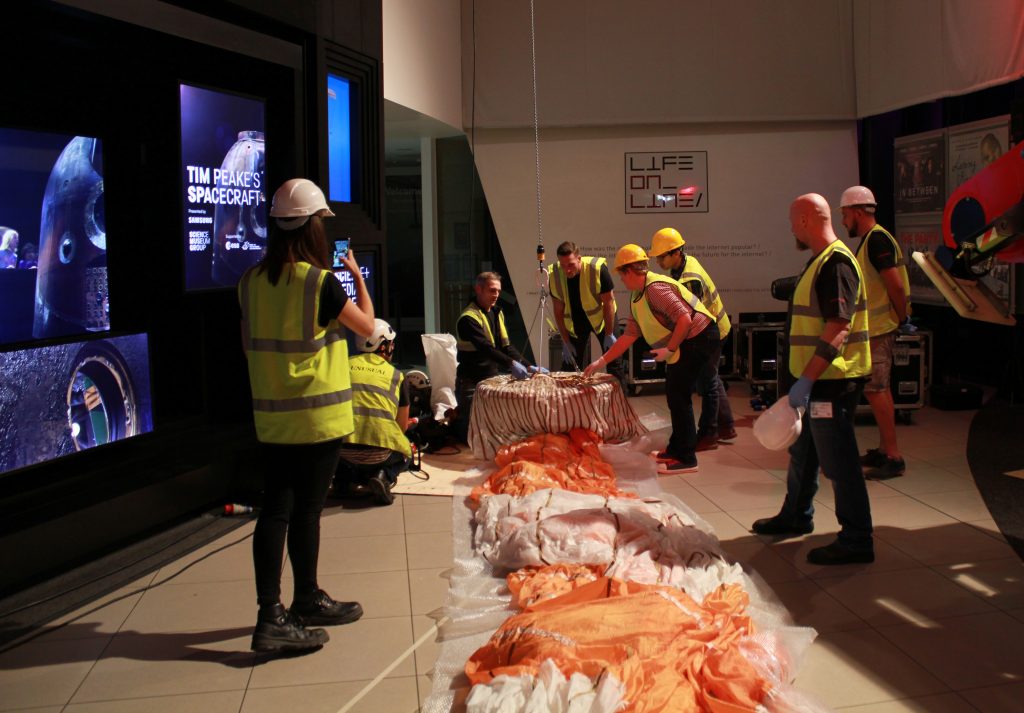
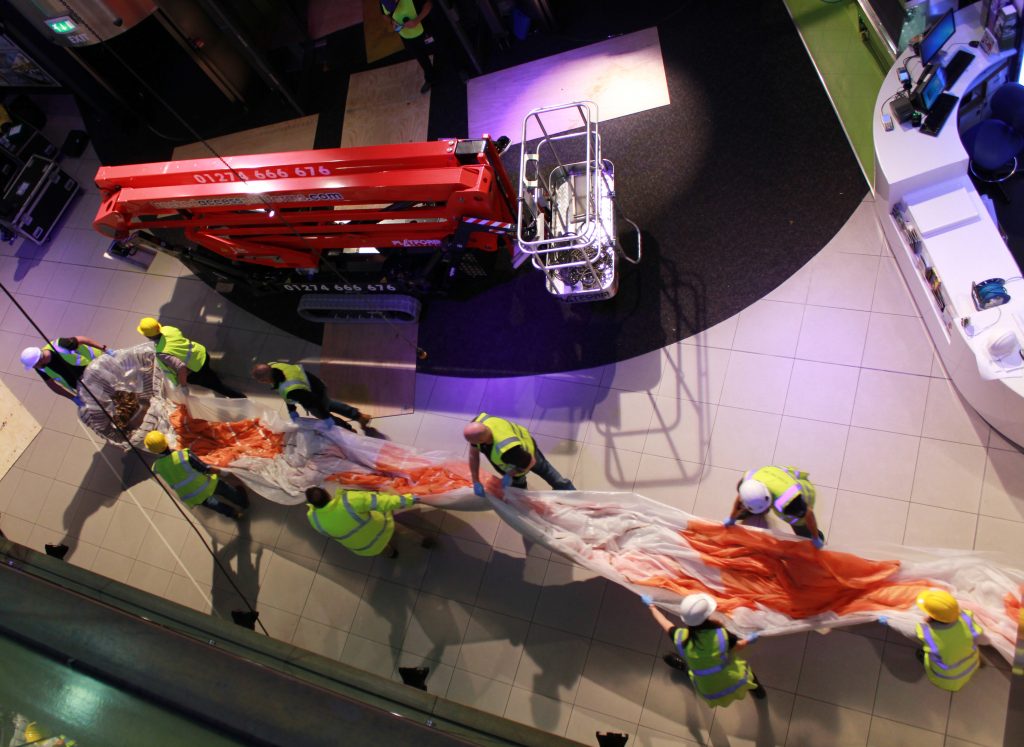
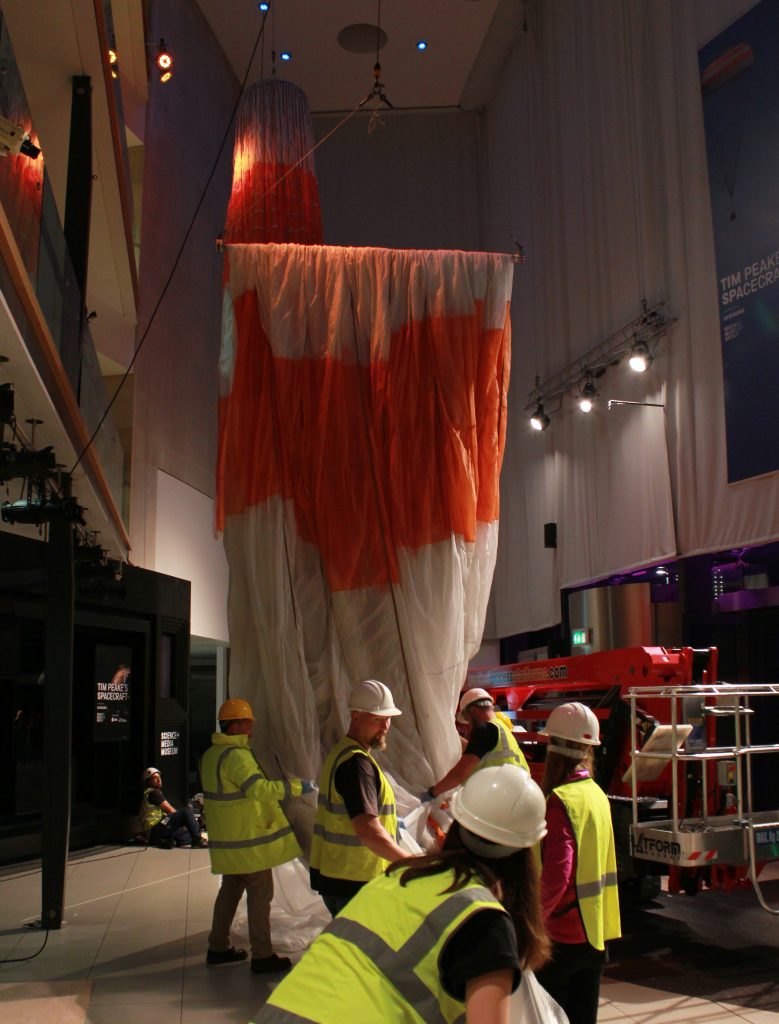
The complete installation took around 16 hours, starting at 18.00 on Monday 25 September and working through the night. We worked with a dedicated team of around 20 people, which included specialists in rigging, lighting, engineering, art handling, exhibition design and conservation. The task of installing the Soyuz capsule and parachute was a mission in itself!
Watch the video to see how the Soyuz was installed in our foyer—in just 43 seconds…
With our work complete, we were very excited to welcome Tim Peake himself to the museum that afternoon to unveil the display.

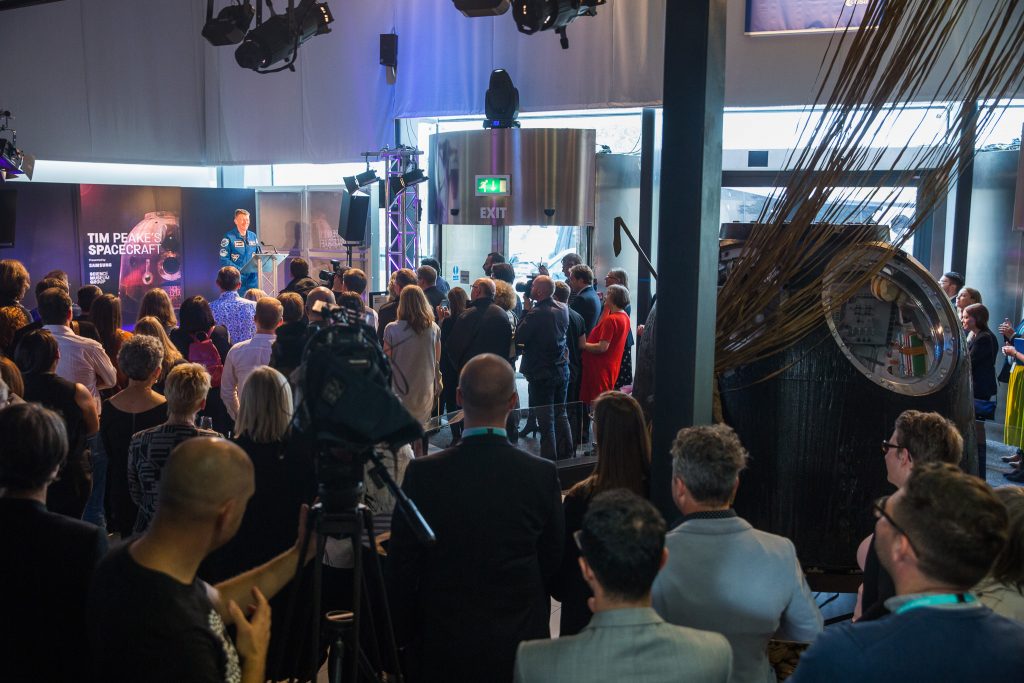
Soyuz fact file
- Soyuz TMA-19M carried astronauts Yuri Malenchenko (Commander, Russia), Tim Kopra (Flight Engineer, USA) and Tim Peake (Flight Engineer, UK) to the International Space Station on 15 December 2015 and returned the same crew to Earth on 18 June 2016
- The capsule encountered temperatures of around 1,500 degrees Celsius when re-entering Earth’s atmosphere, causing the charring and scorch marks you can see on its surface
- The capsule weighs approximately 1.5 tonnes
- If laid flat, the parachute could cover an area the size of two tennis courts
- Soyuz TMA-19M is the first flown human spacecraft acquired for the UK’s national space technology collection

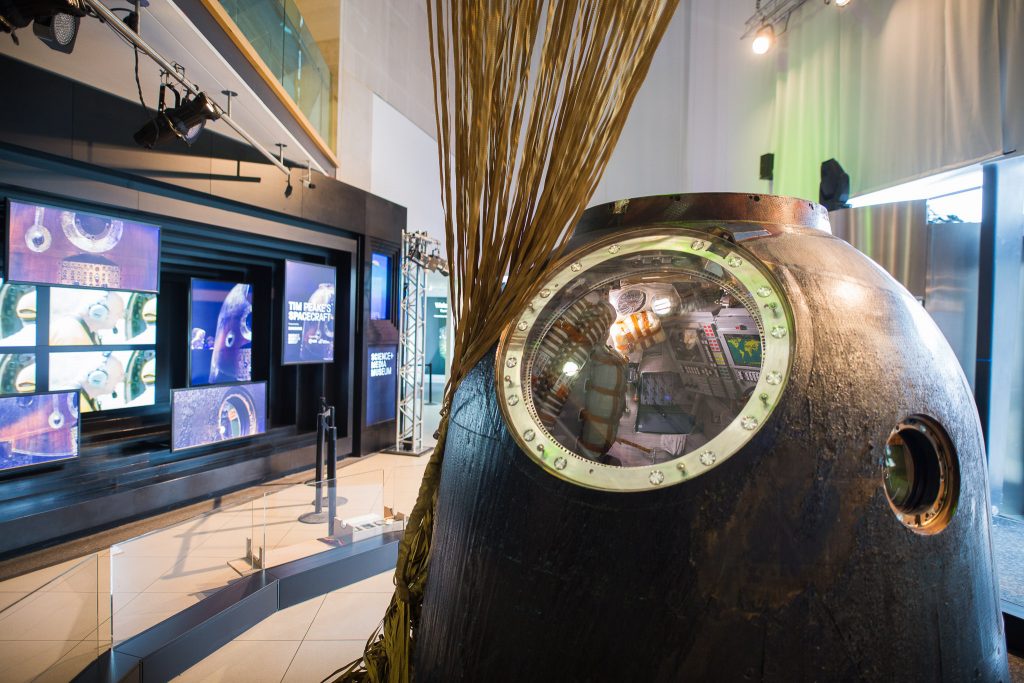
If you want to see Soyuz for yourself, it’s on display in Bradford until 19 November 2017. Come and see the spacecraft in the museum foyer, try out the Space Descent VR experience and enjoy a space-themed documentary in our IMAX cinema. During October half term, there’ll be free family activities in Galleries One and Two as part of our exciting Mission: Space event.
After its stint in Bradford, Soyuz will be embarking on a national tour and visiting the following museums:
- Locomotion, Shildon, County Durham, 22 November 2017 – 15 January 2018
- National Railway Museum, York, 17 January – 8 March 2018
- Museum of Science and Industry, Manchester, 10 March – 13 May 2018
- National Museum of Scotland, Edinburgh, mid-May – mid-August 2018
- National Museum Wales, Cardiff, mid-November 2018 – January 2019
- Ulster Museum, Belfast, mid-February – mid-May 2019
There’s also an opportunity for Soyuz to visit another venue in the UK between August and November 2018. The venue for this slot will be chosen via a public competition. Find out more about the competition and how to enter.
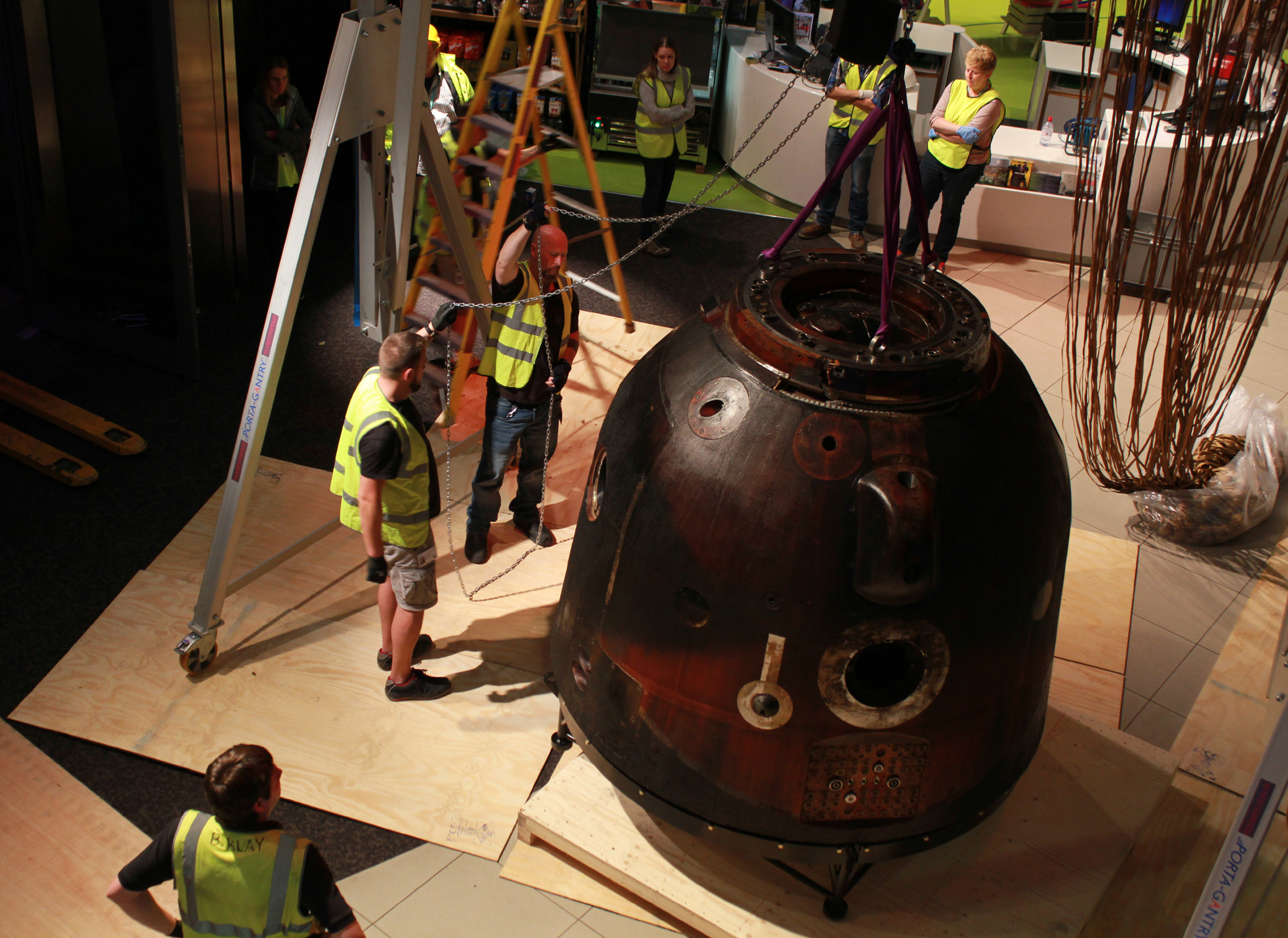
Tremendous achievement for Tim Peake – and for the team at Bradford! Well done.